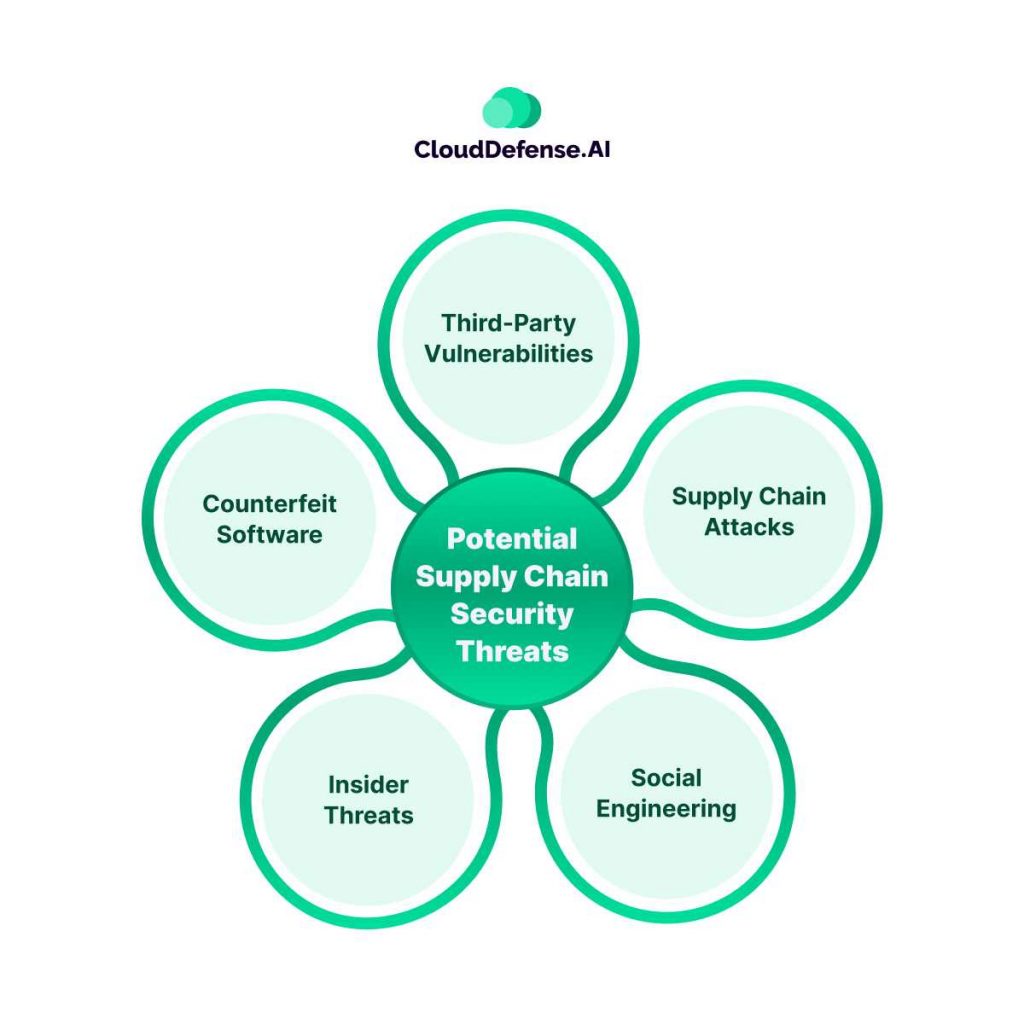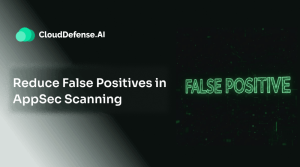What is Supply Chain Security?
You know how when you order stuff online, it goes through all these different steps before it gets to your door? From the warehouse to the shipping company, to the delivery truck – it’s a whole chain of events. Well, the software has its own kind of supply chain too.
Whenever you download an app or update your computer, that software doesn’t just magically appear. It went through a whole process of being developed, tested, and deployed by teams of people using all sorts of tools and components along the way. And at each step, there’s a potential security risk.
Supply Chain Security is all about making sure that the entire chain – from the coding libraries to the deployment systems – is locked down tight. It means verifying every single piece is legit and hasn’t been tampered with. It means controlling who has access to what and keeping a watchful eye for any vulnerabilities that could let hackers sneak something nasty into the mix. It encompasses a set of practices aimed at protecting software from unauthorized modifications, vulnerabilities introduced by external code, and malicious attacks at any stage of development, delivery, and deployment.
Why Supply Chain Security Matters?
So why should you care about securing your software’s supply chain? Well, let me paint you a picture.
Imagine you’re a business running critical applications or storing sensitive data. Everything seems secure from your end. But what if one of the third-party libraries or services you relied on to build that app got compromised upstream? Bam – you’ve just opened a door for attackers without even realizing it.
Or let’s say you’re developing a new mobile game. You integrate some free analytics code to track your users. Seems harmless, right? But what if that code was actually injected with malware designed to steal data? Your users could be exposed before the game even launches.
The ugliest supply chain attacks can happen completely under the radar. You could have rock-solid security, but then get blown wide open by a vendor’s slovenly practices or a hijacked repository. All it takes is one tiny crack for threats to come slithering in.
That’s why Supply Chain Security is so crucial these days. Software doesn’t exist in a vacuum anymore. Our systems are built on this incredibly complex stack of components from all over. Securing just your own output isn’t enough – you need to validate that entire supply chain trail. Otherwise, you’re basically making it too easy for attackers.
Having that said, here are some key ways Supply Chain Security can be helpful:
- Mitigates risks from compromised components and threats throughout the development lifecycle.
- Ensures integrity, authenticity, and trustworthiness of all elements in the software supply chain.
- Prevents downstream impacts of introducing malicious code into systems and infrastructure.
- Provides visibility and control over the entire software development lifecycle.
- Aids in meeting regulatory compliance and industry standards for software security.
- Builds trust and enhances reputation among customers, partners, and stakeholders.
- Enables secure collaboration with third parties and open-source communities.
- Reduces operational risks, legal liabilities, and costs associated with security incidents
Potential Supply Chain Security Threats

The software supply chain, while efficient, creates a complex web of dependencies. Unfortunately, this very interconnectedness introduces potential security threats. Let’s explore some of the common culprits lurking in the shadows:
Third-Party Vulnerabilities
Modern software development heavily relies on third-party code libraries and open-source components. While these tools provide valuable functionality, they can potentially harbor vulnerabilities if not properly vetted. Attackers may exploit these weaknesses to gain unauthorized access to systems or introduce malicious code.
Supply Chain Attacks
One of the worst nightmares is a supply chain compromise – where an attacker sneaks malicious code or backdoors into legitimate software components before they reach your pipelines. Maybe it’s done by infiltrating an open-source project, hijacking a vendor’s update server, or exploiting vulnerabilities in build tools. However it happens, you end up unknowingly pulling tainted code straight into your app’s foundations.
Social Engineering
Deceptive tactics like phishing emails can trick developers into downloading malware or granting unauthorized access to repositories. This stolen access can then be used to introduce vulnerabilities or steal sensitive data.
Insider Threats
Maybe it’s that one disgruntled programmer who got passed over for a promotion. Or an employee whose machine got cryptolocked by ransomware attackers. Either way, bad actors already inside the org are a huge risk to the supply chain’s integrity. They could intentionally inject malware into product releases or sell off their privileged access to shady groups.
Counterfeit Software
Do you know those random “WinRAR installer.exe” downloads from sketchy websites will result in nightmares? Acquiring code from untrusted sources is like picking up a sketchy unmarked prescription pill. You don’t wanna know what’s baked into those binaries or packages.
Securing Your Software Supply Chain: Essential Practices
Securing your software supply chain requires a multi-layered approach. Here are some key practices to fortify your code’s journey:
Inspect Vendors and Open-Source Projects
When you’re importing all that third-party code, you gotta do your homework first. Thoroughly review the vendor’s security rap sheet – are they staying on top of vulnerabilities? Pushing regular updates? Basically, you need to trust they take security as seriously as you do. Same goes for leveraging open-source projects. Yeah, they’re free, but that doesn’t mean they get a pass. Check their reputation and history of responsible development before going all-in.
Vulnerability Management
Okay, so you’ve built out your app using various dependencies. How do you keep tabs on all those components for vulnerabilities? By implementing some serious vulnerability scanning and monitoring. Utilize tools and services that constantly watch for new threats across all your code dependencies and can automatically patch that stuff.
Code Signing and Verification
Code signing and verification are other essential steps. Digitally sign your releases to prove their authenticity and make sure they haven’t been tampered with en route. If the signatures don’t check out,shipment gets rejected – no questions asked.
Secure Coding Practices
But you can’t just secure the supply chain alone – your developers need to uphold their end too. Promote secure coding practices like following checklists, using static analysis tools, and implementing security checks into the whole SDLC. It’s more like weaving security into the development culture from day one.
Minimize Dependencies
Here’s the thing – the more third-party code you integrate, the more you’re increasing your attack surface. While open-source libraries are crazy convenient, everyone adds another link to that supply chain. So be judicious about what you pull in, and keep those dependencies to an absolute minimum where possible.
Continuous Monitoring
Don’t let your guard down after deployment. Continuously monitor your software for suspicious activity and have a plan in place to respond to security incidents swiftly and effectively.
Implement Least Privilege
Next is locking down all the channels those components flow through. You’ll want strict access controls and authentication for your code repositories, development pipelines, artifact registries, and so on. Basically, anything involving your precious code bytes needs security.
Automate Security
Finally, automate as much of this stuff as possible. With so many components constantly updating nowadays, you can’t rely on manually reviewing everything. Implement security scanners, policy enforcement, and real-time alerts into your development workflows. Supply chain security is an endless journey, not a destination.
Final Words
The software we rely on daily is a ticking time bomb – one vulnerability in the vast supply chain can cripple entire systems. Malicious actors lurk at every stage, from code repositories to development tools, waiting to inject chaos. Don’t be lulled into a false sense of security by “trusted” vendors or open-source components. Every line of code is a potential entry point. The time to act is now. Secure your defenses, prioritize supply chain security, or risk becoming the next headline – a victim of a devastating software attack.







